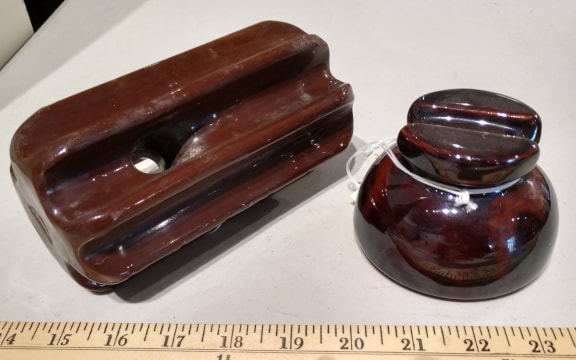Ceramic power line insulators
Because electricity doesn't travel very well through glass or clay, these substances became popular for making insulators that kept power and phone lines from touching each other. Glazed ceramic insulators such as these were commonly used until the introduction of the cap-and-pin insulator made it possible to transmit much higher voltages safely.

